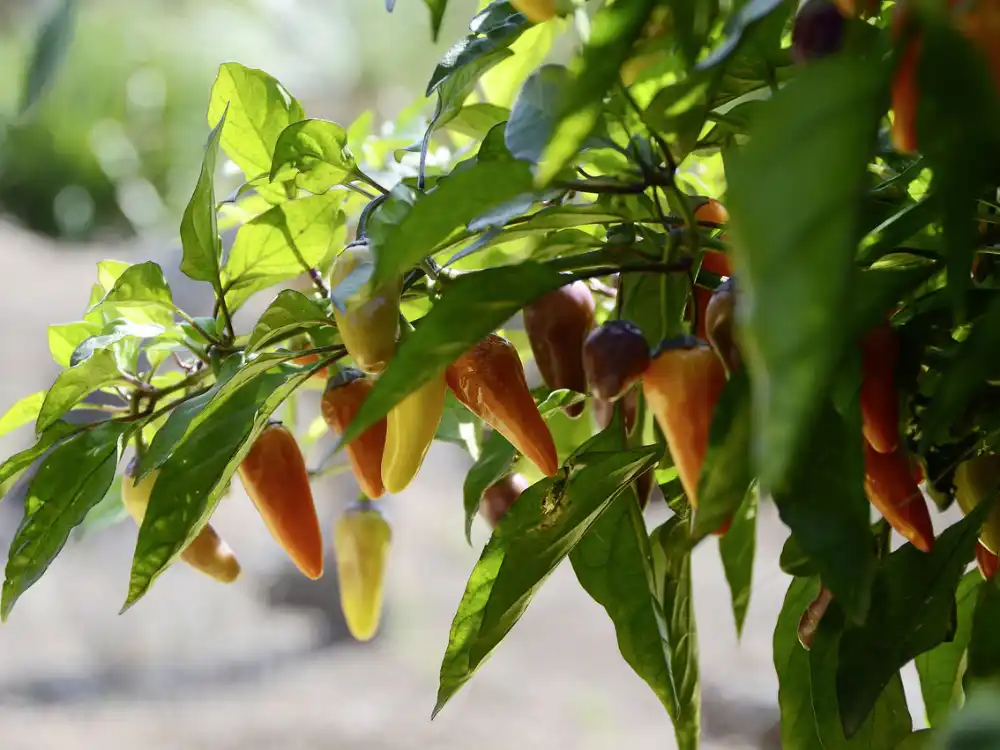Pepper plants are a popular addition to many home gardens, thanks to their vibrant colors and delicious flavors. However, one common issue that gardeners face with pepper plants is their tendency to become leggy. Leggy pepper plants have long, thin stems and sparse foliage, which can negatively impact their overall health and productivity.
If you’re wondering how to keep your pepper plants from getting leggy, we’ve got you covered with some helpful tips and tricks.
1. Provide Adequate Lighting
One of the main reasons pepper plants become leggy is insufficient lighting. These plants require at least 6-8 hours of direct sunlight each day to thrive. If you’re starting peppers plants indoors, make sure to place them near a south-facing window or use grow lights to supplement the natural light.
Outdoor gardeners should select a sunny spot for their pepper plants to ensure they receive the necessary amount of sunlight.
2. Start with Healthy Seedlings
The quality of your pepper seedlings plays a crucial role in preventing legginess. When purchasing pepper seedlings, look for sturdy plants with thick stems and healthy foliage. Avoid leggy seedlings or those that appear weak and spindly. Healthy seedlings have a better chance of developing into strong, compact plants.
3. Maintain Optimal Temperature
Pepper plants prefer warm temperatures and can become leggy if exposed to extreme heat or cold. Aim to keep the temperature between 70-85°F during the day and around 60-70°F at night. If growing peppers indoors, be cautious of placing them near drafty windows or heating vents, as temperature fluctuations can cause legginess.
4. Avoid Overfertilizing
While fertilizing is essential for the growth of pepper plants, overdoing it can lead to legginess. Excessive nitrogen in the soil promotes rapid stem growth at the expense of foliage development. Use an organic fertilizer with adequate amounts of nitrogen, phosphorus, and potassium, and follow the recommended application rates. Regularly monitor your plants for signs of nutrient deficiency or excess, and adjust your fertilization routine accordingly.
5. Prune and Pinch Regularly
To prevent legginess, it’s important to prune and pinch your pepper plants regularly. Pinching involves removing the top growth of the plant, which encourages branching and a more compact shape. Pruning, on the other hand, involves removing any leggy or weak stems to redirect the plant’s energy towards healthier growth. Both techniques help maintain a bushier pepper plant with more foliage and fewer long stems.
6. Provide Adequate Support
Another way to prevent leggy pepper plants is by providing them with adequate support. As the plants grow, their stems can become weak and bend under the weight of the developing fruit. Using stakes or cages to support the plants will help keep them upright and prevent legginess caused by drooping stems. Additionally, supporting the plants allows for better air circulation, reducing the risk of disease.
7. Water Properly
Proper watering is crucial for the overall health of your pepper plants. Inconsistent watering can stress the plants and lead to legginess. Water your pepper plants deeply and regularly, ensuring the soil is evenly moist but not waterlogged. Avoid overwatering, as it can cause root rot and other issues.
Mulching around the base of the plants can help retain moisture and regulate soil temperature.
8. Choose the Right Pepper Varieties
Some pepper varieties are naturally more prone to legginess than others. If you consistently struggle with leggy pepper plants, consider selecting compact or bushy varieties that are known for their sturdy growth habits. Examples include “Gong Bao” or “Golden Cayenne” These varieties are less likely to become leggy and can save you some trouble in the long run.
Conclusion
By following these tips, you can help prevent your pepper plants from becoming leggy and ensure they grow into healthy, productive plants. Remember to provide adequate lighting, start with healthy seedlings, maintain optimal temperatures, avoid overfertilizing, prune and pinch regularly, provide support, water properly, and choose the right pepper varieties. With a little care and attention, you’ll be rewarded with robust pepper plants that yield a bountiful harvest.





